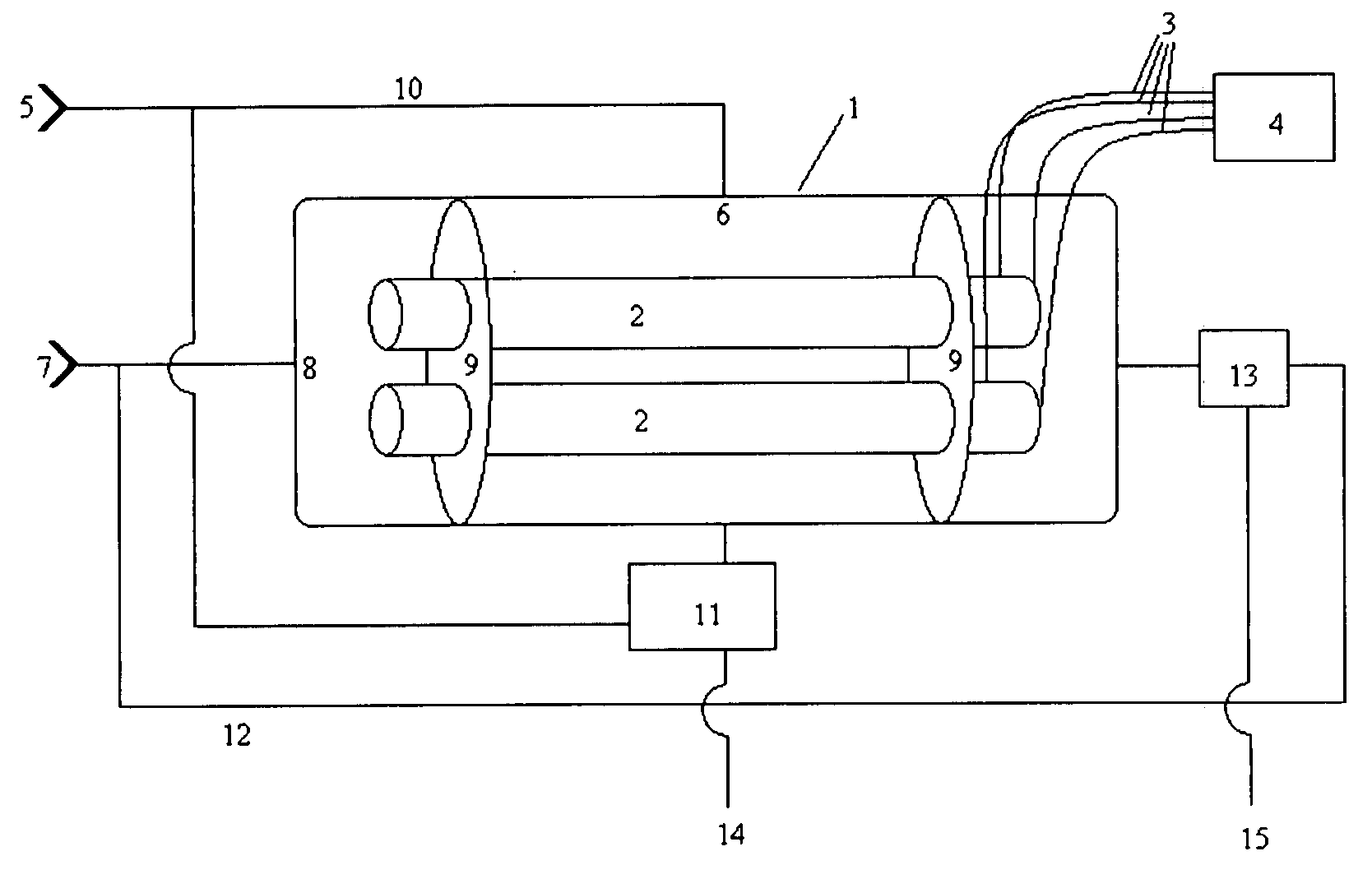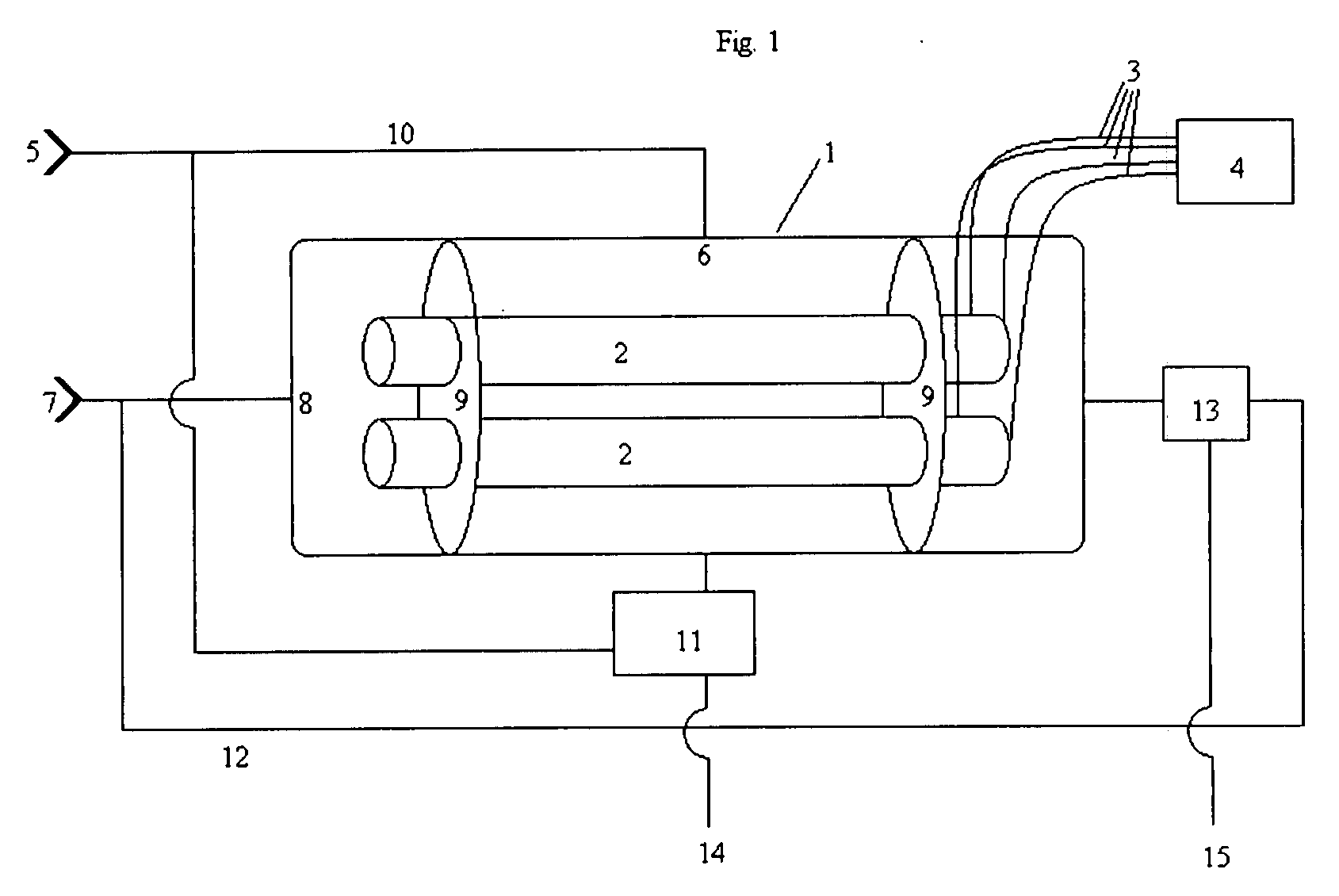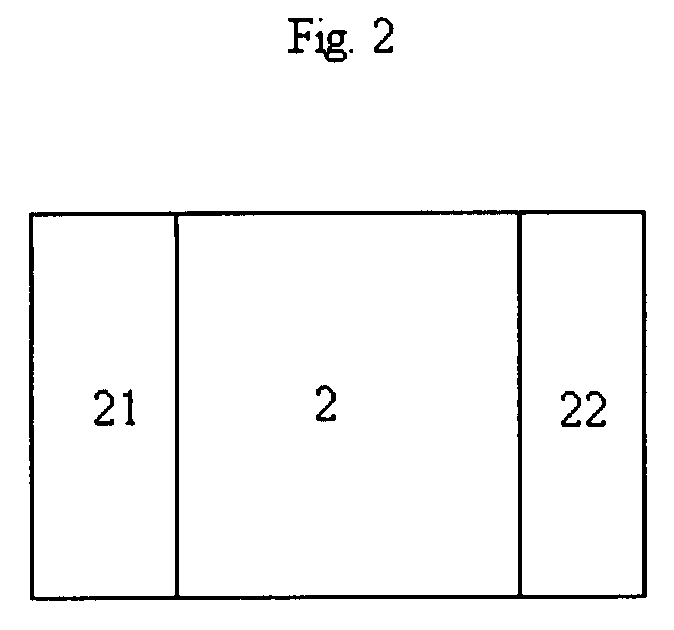Method and apparatus for anhydrous ammonia production
an ammonia and ammonia technology, applied in the direction of layered products, chemistry apparatus and processes, electrolysis components, etc., can solve the problems of not being economically viable, counteracting at least, and modern ammonia production facilities typically creating massive amounts of carbon dioxid
- Summary
- Abstract
- Description
- Claims
- Application Information
AI Technical Summary
Benefits of technology
Problems solved by technology
Method used
Image
Examples
Embodiment Construction
[0026]For the purposes of promoting an understanding of the principles of the invention, a preferred embodiment is illustrated. As shown in FIG. 1, the present invention includes an apparatus for synthesizing anhydrous ammonia. The apparatus includes a process chamber 1 containing a proton conducting electrolyte 2 having a first side and a second side. While not meant to be limiting, in the embodiment shown in FIG. 1, the proton conducting electrolyte 2 is shown in a tubular arrangement, such that the first side is the exterior of the tube and the second side is the interior of the tube. Circuitry 3, including a power source 4, is configured to provide a voltage across the proton conducting electrolyte 2. A water vapor source 5 is in communication with a water vapor inlet 6 for allowing a flow of water vapor from the water vapor source 5 into the process chamber 1 and to the first side of the proton conducting electrolyte 2. A nitrogen source 7, is in communication with a nitrogen i...
PUM
 Login to View More
Login to View More Abstract
Description
Claims
Application Information
 Login to View More
Login to View More - R&D
- Intellectual Property
- Life Sciences
- Materials
- Tech Scout
- Unparalleled Data Quality
- Higher Quality Content
- 60% Fewer Hallucinations
Browse by: Latest US Patents, China's latest patents, Technical Efficacy Thesaurus, Application Domain, Technology Topic, Popular Technical Reports.
© 2025 PatSnap. All rights reserved.Legal|Privacy policy|Modern Slavery Act Transparency Statement|Sitemap|About US| Contact US: help@patsnap.com



